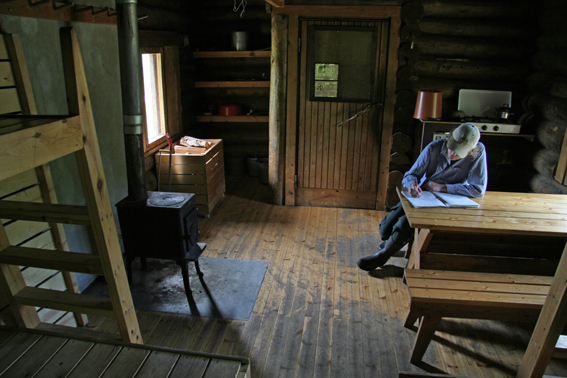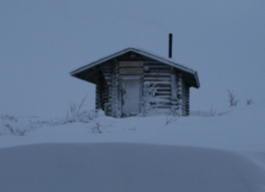Jouni Laaksonen 20.7.2020
In this twelve post series I have told about over one hundred wilderness huts, with map links. This is only a small part of Finnish wilderness hut network. Many more huts you will find at nationalparks.fi/en/huts (in English), and even more in my and Joel Ahola’s book Suomen autiotuvat (in Finnish, both the link and the book).
And in English you will find a selection of well over one hundred huts important to a hiker, with coordinates, in my book Hiking in Finland.
In the last post I told how hiking started in Finland in earnest in 1950’s. Many hiking associations built huts, and in late 1950’s and more seriously in 1960’s also the government of Finland started building huts for hikers. From there on the state of Finland, mostly in the form of Metsähallitus (Parks & Wildlife Finland) has built huts. This is the largest category of huts (out of my twelve categories).
Many huts in this category resemble each other, for the same standard drawings were often used.
Slideshow: Tuiskukuru, Hirvashauta, Sioskuru and Hannukuru huts resemble each other quite a lot. Each has two rooms: one is locked reservable hut and the other is open wilderness hut. Except that in Hannukuru a new big reservable hut has been built, and the old reservable room is now open.
Examples of this kind of huts are numerous:
In Käsivarsi Wilderness area for example Kuonjarjohka, Meekonjärvi, Pitsusjärvi, Kobmajohka, Terbmisjärvi, Aatsa huts.
Aatsa hut on left and Kuonjarjohka hut on right. At Aatsa it was -25C and visibility was really poor. It sure was great to spend a night in a cabin rather than in a tent…
In Pöyrisjärvi Wilderness area Pöyrisjärvi, Staalojärvi, Nallatupa, Lenkihaka, Naltijärvi huts.
Staalojärvi and Nallatupa wilderness huts.
In Pallas-Yllästunturi National Park Sioskuru, Hannukuru, Nammalakuru huts. (See the slideshow above.)
In Lemmenjoki National Park Vaskolompolo, Postijoenlatva, Ravadasjärvi huts.
Ravadasjärvi wilderness hut is situated in a lovely place on the shore of a lake. Often the huts are built in nice places.
In Paistunturit Wilderness Area Ruktajärvi, Njavgoaivi, Kuoppilasjärvi huts.

Ruktajärvi wilderness hut is a typical open hut. The vital comforts are available: shelter from rain, wind and frost, wood oven for heating, drying clothes and preparing food, also a gas cooker for preparing food, table and benches, and a bucket for fetching drinking water. My wife is doing the important duty of every hut visitor: writing in the guestbook.
In Kaldoaivi Wilderness Area Tsaarajärvi, Huikkimajoki, Iisakkijärvi, Rousajärvi huts.
In Urho Kekkonen National Park Suomunruoktu, Tuiskukuru, Luirojärvi, Lankojärvi, Kivipää, Hammaskuru, Muorravaarakka, Jyrkkävaara, Mantoselkä, Karhuoja, Hirvashauta huts.

After a good night’s sleep in Kivipää wilderness hut we are heading a light snowfall.
In other areas for example Sollomusjärvi, Uittipiekka, Härkätunturi, Murhahaara, Karhunjuomalampi, Huttuloma, Kapusta, Pyhälampi, Pajupuro, Ansakämppä, Hoikkalampi, Raatetupa, Ahmatupa, Koiratupa, Välitupa, Ylpiätupa, Annintupa…
Slideshow: Pyhälampi hut is in Pyhä-Luosto National Park, Pajupuro hut is in Korouoma gorge, Ansakämppä hut is in Oulanka National Park along Karhunkierros Trail, Ahmatupa is in Syöte National Park.
* * *
Now at last this neverending series is finished. 🙂 If you are interested in open huts in the middle of wilderness, or along hiking trails, see also How to behave in a wilderness hut, and Wilderness huts, what are they
I will be hiking a lot during this late summer and autumn (if COVID-19 allows me to), so it might take some time until I can write my next post. Happy hikes to everyone!






